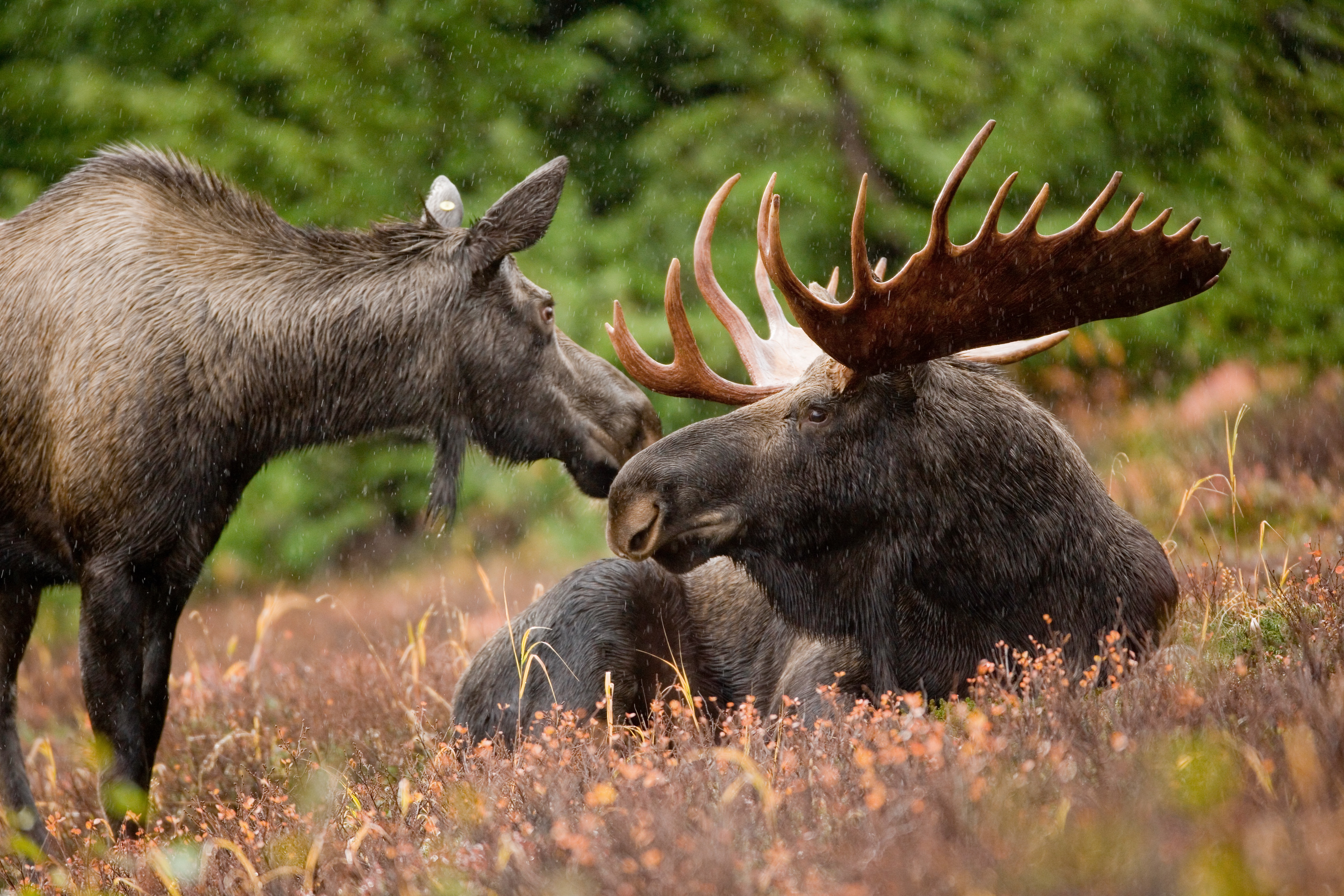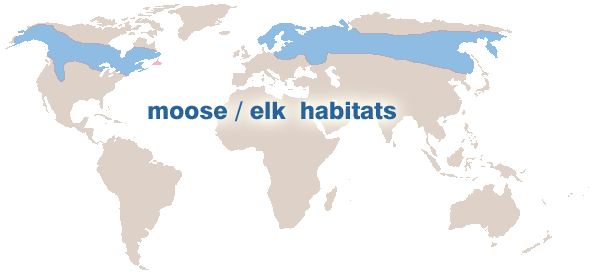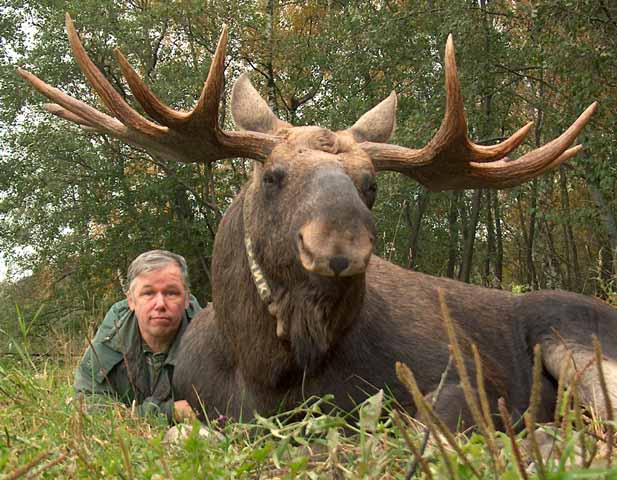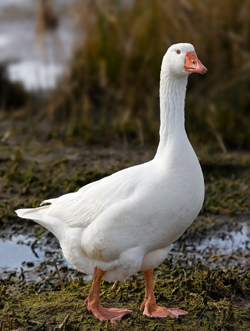The plural of moose
23 Oct 2022

Do you know what the plural of ‘moose’ is?

You know what a moose is, right? It’s not an animal you see outside of North America and northern Eurasia. In Europe they call it ‘elk’. But hereafter I shall refer to the animal as moose, to make it easier to read.
See the picture below – that’s what it looks like.

No, not the animal in a faded blue jacket; that’s a man! I’m referring to the animal with the huge snout and those very big horns – that’s the moose.
So what would you call them if you saw two or more of these big-horned animals? Mooses? Maybe not.
I’m sure you know that the plural of ‘goose’ is ‘geese’. Right? So have you seen any meese recently? Grazing in the forest?

Hey! Hey! Hey! A moose is nothing like a goose, you might say. It’s a big deer that can race through the woods at 35 miles per hour, not a big bird that can fly at up to 70 miles per hour! But even if it has half the speed of a flying goose, an elk is way faster than humans
Very different, right? So shouldn’t their plural forms be different too? They are, in fact, different, though that has nothing to do with their sizes or because one of them is a big bird and the other a big animal.
How big? A moose is bigger than a horse! There is more about these animals towards the end of this article. But before you go there, let’s dispose of the question of the plural of moose.
You just read that the moose is bigger than a horse, and their snouts resemble the snouts of horses. Sort of. So should their plural be similar to the plural of ‘horse’, which is ‘horses’? So – ‘mooses’?
SORRY! It’s not meese. And it’s not mooses either.
The words goose and moose have originated from different languages and different times in history. That’s possibly one reason why their plurals are different.
The word ‘moose’ is a relatively new addition to the English language, having come from Native American, mainly Algonquian, languages in the early 1600s. In the Algonquian language the plural of a noun is the same as the singular. Just as in the English language ‘sheep’ is both singular and plural.
So the plural of moose is just that: moose. The word is used for a single moose and many of these animals too. So: you have one moose and you have many moose.
It’s like the word ‘cattle’, which is the plural for animals like cows and bulls. But ‘cattle’ is always used for the plural. You do NOT say ‘one cattle’.
Talking of cattle, that is, cows and bulls, a female moose is called a cow. And the male is called a bull. And, you guessed it – a young one is called a calf.
The moose is the largest member of the deer family. Adult males (or bulls) average a height of 6 feet at the shoulders, and can weigh as much as 635 kilos (1,400 pounds). Females (cows) are smaller.

Moose are heavy-bodied, have heads like horses, and have a hump on their backs. Moose vary in color from light brown to dusty black, with the face generally dark brown or black on bulls, and a lighter brown on cows.
Moose, by the way, are near-sighted. But they have a keen sense of smell and hearing, which alerts them to potential danger. And, awkward as they might look, they can race through the woods at speeds of up to 35 mph without making too much noise.
These animals are also good swimmers, and can move rapidly for miles in water.
Oh, by the way, please do not misspell moose as mousse. Mousse is a dessert. And don’t imagine that a place where moose gather is called a mooseum – it’s usually just a forest.
I hope you liked this little tidbit. Do give me your feedback.
Male moose have unmistakable broad, palmate (i.e., open-hand shaped) antlers unlike most other members of the deer family that have antlers with a dendritic (i.e., twig-like) configuration.
The natural habitat of moose is northern sub-arctic forests and temperate forests of the northern hemisphere.
Unlike most other species of deer, moose are solitary animals, and do not live in herds. The number of these herbivorous animals has declined over the years because of hunting, diseases, and because of their falling prey to other predators, such as wolves and bears.
That’s sad, considering that the earliest known species in the moose lineage, the French moose, lived in the Pliocene epoch, about 2 million years ago.



















